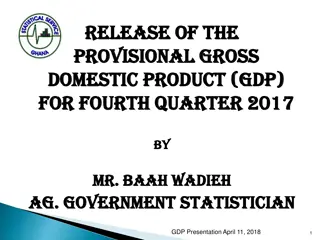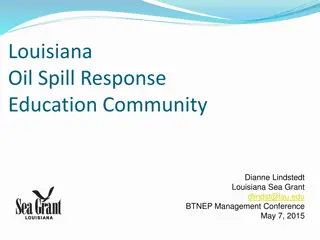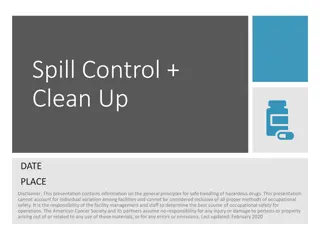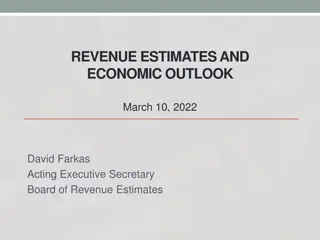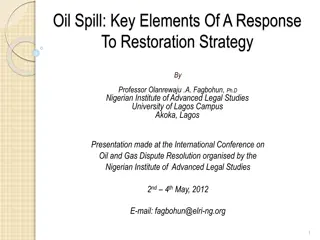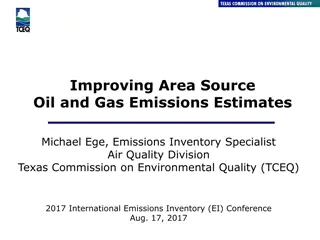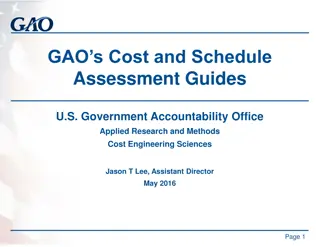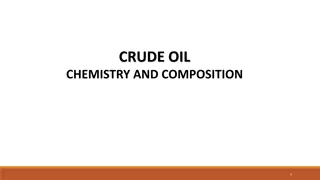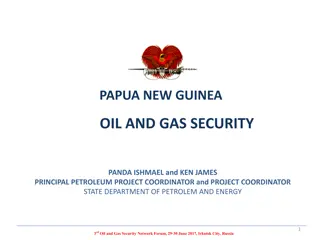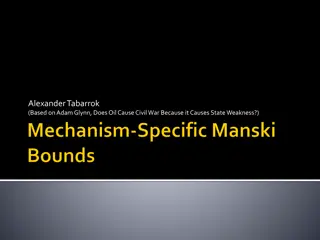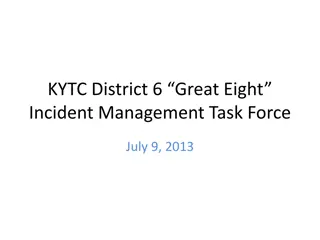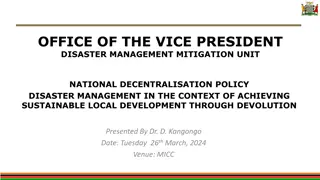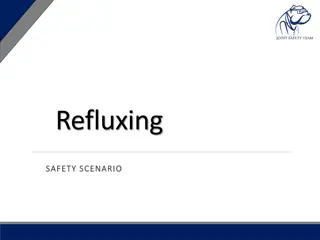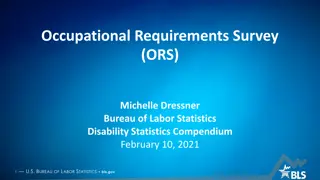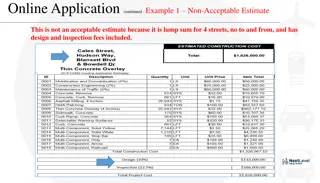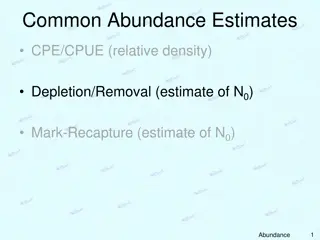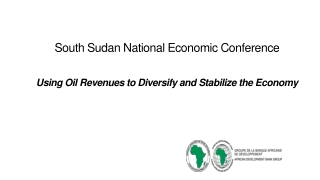Analyzing Deepwater Disaster: Inaccurate Oil Spill Estimates
Explore the Deepwater Horizon disaster, where oil spill estimates were inaccurate due to various factors such as convoluted discharges, technological limitations, and reluctance to share data. Consequences of underestimation and reasons behind flawed estimates are discussed, shedding light on the challenges in managing such environmental disasters.
- Deepwater Disaster
- Oil Spill Estimates
- Environmental Disaster
- Inaccurate Estimations
- Management Challenges
Download Presentation

Please find below an Image/Link to download the presentation.
The content on the website is provided AS IS for your information and personal use only. It may not be sold, licensed, or shared on other websites without obtaining consent from the author. Download presentation by click this link. If you encounter any issues during the download, it is possible that the publisher has removed the file from their server.
E N D
Presentation Transcript
Deepwater disaster: how the oil spill estimates got it wrong
Outline Background of the oil spill Ways to analyse the amount of oil spill Why were the estimates so wrong? - The case for underestimation and the reason why - Difference in estimation standards What were the consequences for the management of the disaster? Take home message
Background of the oil spill A drilling rig called Deepwater Horizon exploded and sunk on 20th April 2010. 11 people died Caused an eruption of oil and gas from BP s Macando well in Grand Island, Louisiana Discharge of oil on the sea continued for 84 days, till 15 July Official reports on the release and discharge rates were issued by authorities of the Unified Command, and they took a very long time to get the rate right There had been an increase in the estimated values of leaked oil from the start to the end of the disaster.
oil and gas that escapes into the environment. oil and gas that leaves the reservoir
Why were the estimates so wrong? The case for underestimation and the reason why: Oil was discharging from very convoluted positions Given the circumstances, responders had three options to estimate the total discharge. - (1) technical means ie seabed sensors and videos (to quantify the flow from the discharging jets) - (2) geological and engineering data model about the reservoir and well - (3) back-calculation from the amount of oil arriving at the surface of the ocean.
Why were the estimates so wrong? But Thad Allen, Incident Commander said that is it not exactly accurate due to the depth of the water, and their ability to assess from remotely operated vehicles and video footage. Even when other experts could accurately estimate the discharge rate (on their behalf), they refused to release publicly the video footage recorded at the seafloor Claimed that accurate estimate was unnecessary as it might hinder their response activity
Why were the estimates so wrong? First framework used by BP technicians compensated for evaporation and dissipation by using a multiplier of 2 (high rate of evaporation and dissipation). Technicians were referencing a problematic response plan that did not accurately represent the area/environment that the oil spill occurred in. Consequently, the estimates BP technicians came up with significantly understated the extent of spillage.
Why were the estimates so wrong? Second framework technicians used to estimate the oil spill was relying on contextual information such as the nature of the reservoir, the flow capacity of the pipes used, and evaluation of the condition of the reservoir and well components. Ultimately, they had a wide range of estimated discharged bopd and they chose to give the most optimistic one (lower value). Once again the extent of spillage was being understated.
Why were the estimates so wrong? The US is not a signatory of the Bonn Agreement, but they are obligated to follow the Bonn s Standards in assessing leaks. The Bonn Agreement is the mechanism by which the North Sea States, and the European Union (the Contracting Parties), work together to help each other in combating pollution in the North Sea Area from maritime disasters and chronic pollution from ships and offshore installations; and to carry out surveillance as an aid to detecting and combating pollution at sea. But the BP technicians used the ASTM version instead, causing serious underestimation of oil leak.
Why were the estimates so wrong? Difference in standards: Bonn Standards/NOAA guidelines: - Thinnest possible layer(Sheen): no more than a few molecule thick. - Slightly thicker layers(Rainbows): 0.5 to 5 m thick. - Thicker layers(metallic/discontinuous/true): 10 to more than 100 m. ASTM Standard: using colour and appearance of oil on water to judge. - The standard highlights that the only physical change in appearance that is reliable is the onset of rainbow colours, at 0.5 to 3 m thickness .
What were the consequences for management of the disaster? The BP team withheld information because they believe the worst has yet to happen. Ignored advises and guidances from experts that could give better analysis We know that the estimated rates were significantly lower than actual rates. Without an accurate estimate of the problem it is difficult to come up with an appropriate solution. Direct measurements is preferred the method to determine pump or spill rate. Without definite numbers we end up trying to fit a square peg into a round hole.
Take Home Message When real shit happens and you need help, seek help. Hiding it will turn the situation worse. And by the time you decide to be honest, it is already too late to salvage the situation.



